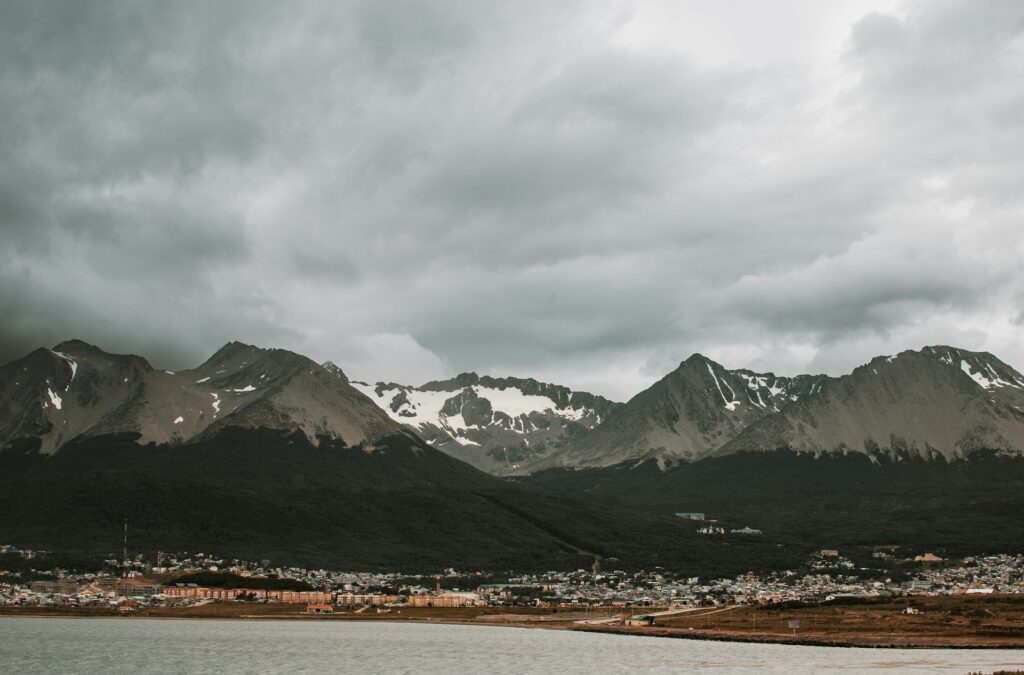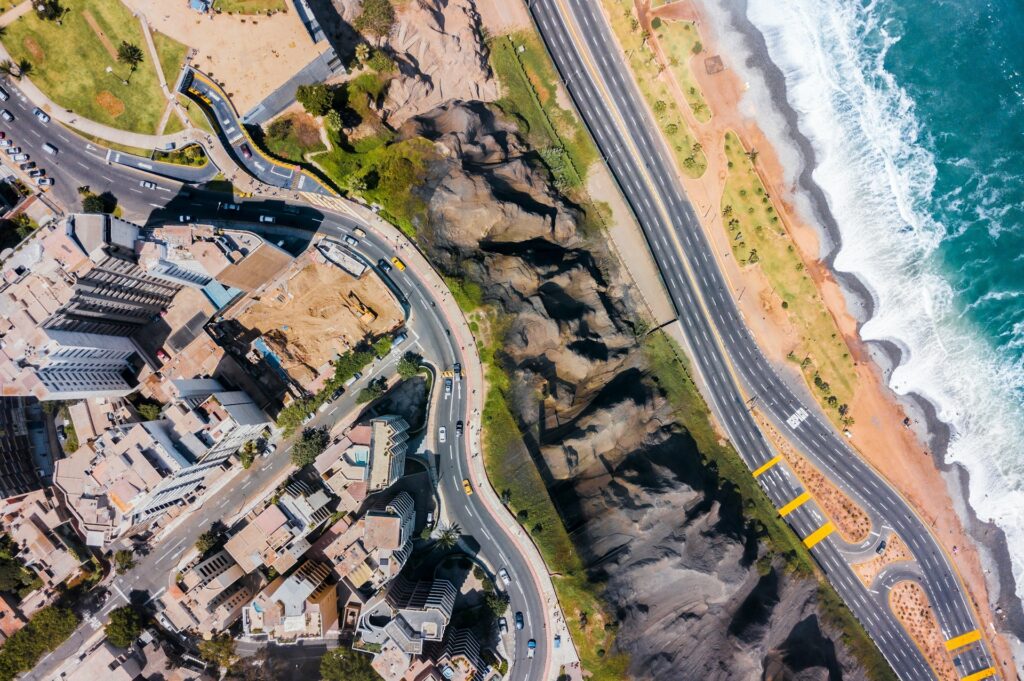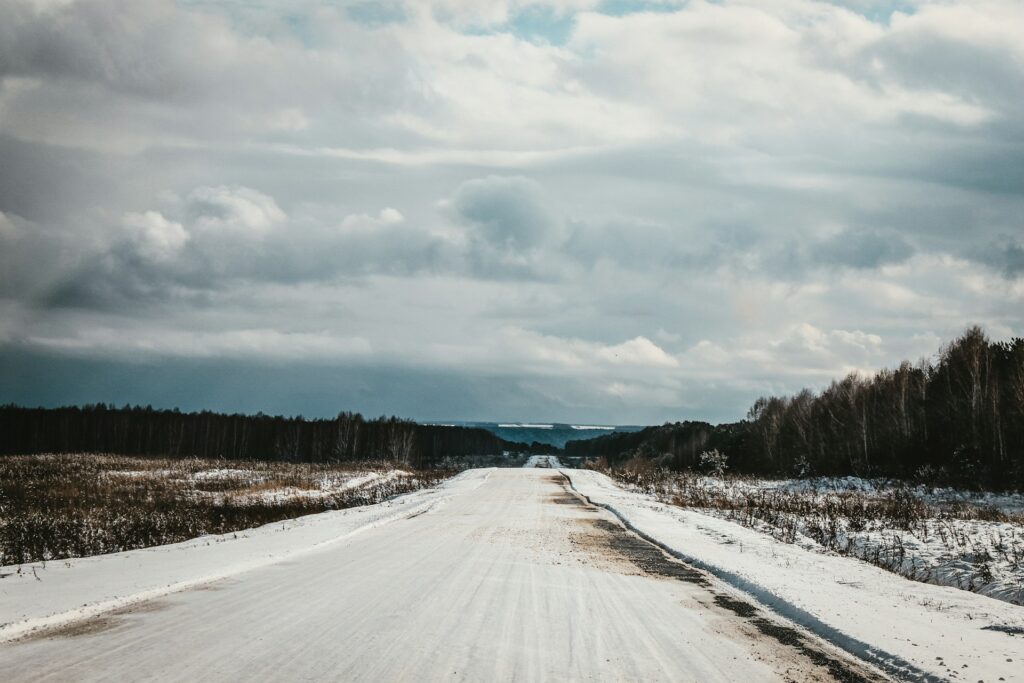Have you ever found yourself asking, “What is the longest road in the world?” Well, we’ve got the answer. According to Guinness World Records, that prize goes to the Pan-American Highway, which covers almost 18,640 miles from Alaska to Argentina. Along the way, it passes through 14 different countries across two continents, as well as six different time zones. In second place you can find Highway 1 on the other side of the world, in Australia with 9,000 miles, and behind that comes the Trans-Siberian Highway that runs through Russia covering 6,800 miles. If you are getting excited, keep on learning everything you need to know about the longest roadways in the world.
The Pan-American Highway: A road of grand proportions
If you’re looking for a real road trip adventure, traveling the full length of the challenging Pan-American Highway has to be right up there. With the route stretching from North America to South America and winding through various climates and landscapes, it can take several months to complete the journey.
Length and status of the longest road in the world
While most consider the length of the Pan-American Highway to be around 18,640 miles – making it the longest road in the world – it’s almost impossible to measure the exact length of this sprawling roadway. That’s in part thanks to the fact that it crosses two vast continents, as well as the fact that many debate whether the numerous unofficial branch routes found along the highway should be included. Add those in and you could cover the full Arctic almost to the Antarctic, bringing the road to a total length of 24,855 miles.
It’s also worth noting that not all of the Pan-American Highway is paved. While the network of roads that make up the PAH are nearly continuous, there is a section of around 100 miles between Panama and Colombia that is not paved. This section is known as the Darién Gap, and is generally crossed by boat.

The Darién Gap
While the Pan-American Highway has been crowned the longest road in the world, it is not actually possible to drive the entire length of the route. That is because of the Darién Gap, an unpassable section of dense jungle that is found around halfway along the Pan-American Highway. Here the road disconnects for around 100 miles in a stretch of remote wilderness between Panama and Colombia
This patch of jungle is widely regarded as one of the most remote locations on Earth, but that doesn’t mean you can’t still complete a road trip along the Pan-American Highway. Most travelers simply hop on a ferry and ship their car from Panama City to Cartagena before hitting the road again from there. Or, if you’re feeling really brave, it’s a four-day hike to travel the distance by land – though you should bear in mind that the gap is made up of dense swampland and rainforest inhabited by indigenous tribes.
A geographical journey of the longest roadway in the world: Countries connected
As well as being the longest roadway in the world, the Pan-American Highway travels through a staggering 14 different countries across two continents. The northern part of the road starts in frosty Prudhoe Bay, Alaska, and crosses through Canada, the United States, Mexico, Guatemala, El Salvador, Honduras, Nicaragua and Costa Rica before ending up in Panama. The southern part, meanwhile, traverses Colombia, Ecuador, Peru and Chile, finishing up at the tip of Argentina in Ushuaia.
SIXT has you covered no matter where you plan to start your road trip, with our multiple locations in countries, like Canada, Mexico, Honduras, Nicaragua, Costa Rica, Colombia, Peru, Chile, Panama, Argentina, and the USA.

The road’s historical development
The construction of the Pan-American Highway was a vast endeavor that started in 1923, coinciding with the rise in automobile ownership, and aimed to include both new roads as well as pull together existing highways in the countries it would pass through. As such, instead of being a single road, it is actually made up of a complicated network of interconnected routes.
The idea for the highway was approved in 1928 but stalled in 1929 when the Great Depression hit in the US. In 1937, a host of countries – including Argentina, Peru, Canada, and the US – signed a document agreeing to undertake speedy construction of the highway, and in 1950, Mexico became the first Latin American country to complete its section of the highway. Due to its complex nature and multiple routes and branches, today there is no one road that is officially deemed the Pan-American Highway in the US or Canada. Meanwhile, in Spanish, it is known as the Carretera Panamericana.
Experiencing the Highway
Due to its status as the longest road in the world and the fact that it crosses through so many different countries, you can expect to see plenty of spectacular scenery and diverse landscapes along the route. Drive the Pan-American Highway and you’ll encounter an array of different climates, from impenetrable jungles and tropical rainforests to arctic tundra and scorched deserts.
As the Pan-American Highway passes through so many varying ecological zones, it’s worth bearing in mind that some areas are only passable during the dry season. In many of the regions, driving can also be dangerous at times, both due to the harsh climate and the potential to encounter criminals. Driving along the Pan-American Highway is the ultimate test of a driver’s skills, which is no doubt why this is considered one of the best roads in the world for a road trip like no other.

Scenic wonders of the longest road in the world
Though there are many legendary road trips in the US, from traveling the length of Route 66 to hitting the road between Florida and New York, nothing can beat the Pan-American Highway when it comes to scenic wonders. Where else could you embark on a road trip that begins in the arctic tundra of Alaska and ends up in Ushaia, Argentina, known for its breathtaking mountainous scenery as well as being home to colonies of penguins? Located in the Tierra del Fuego archipelago, it’s not for nothing that this part of Argentina is nicknamed the ‘End of the World’.
Depending on which route you take along the longest road in the world, you can expect to pass through famous US cities including Los Angeles, San Diego, and Las Vegas. Further south, you’ll be able to drive through Mexico City and then on through every capital city in Central America (apart from Tegucigalpa in Honduras) before hitting the Darién Gap. When the main road picks up again in Turbo, Colombia, you’ll be able to drive through Quito in Ecuador, Lima in Peru, and Buenos Aires in Argentina. Another branch of the route will also lead you through Uruguay and into Brazil, passing through Sao Paolo and Rio. Quite the epic road trip indeed!
Unique features
Driving the length of the Pan-American Highway is truly an out-of-this-world experience. So, unsurprisingly, it comes with its fair share of challenges. Perhaps the most adrenaline-inducing of them all is the drive up to the 11,318-foot (3,450-meter) Cerro de la Muerte Mountain peak in Costa Rica. Roughly translated, the name means ‘Summit of Death’.
Elsewhere, the most challenging terrain you’re likely to come across is in the jungle, which you’ll discover as you pass through Guatemala towards El Salvador. However, as long as you don’t bother the exotic animals or the residents who live here, you should be fine. While you’re in El Salvador, it’s worth stopping off at the Joya de Cerén Archaeological Site, which is believed to have been inhabited by the Mayans in the 1st century. Further south, don’t miss the chance to stop off at León in Nicaragua, where you can explore the ruins of León Viejo, which has been declared a Historical-Cultural World Heritage Site by UNESCO.

What challenges might travelers face when journeying on the Pan-American Highway?
Travelers can expect to face a fair few challenges when driving along the Pan-American Highway. The first comes in the form of the terrain. Due to the vast length of the road and the fact that it travels through 14 different countries and two continents, drivers will encounter a variety of ecological zones along the way. Those who aren’t used to driving in freezing, icy climates or arid desert landscapes might find the route challenging.
Travelers must also take into consideration the fact that some regions can only be crossed during the dry season, while others can suffer from extreme weather during the rainy season, and should plan their routes and timings accordingly. Other challenges could come in the form of navigating steep terrain – most notably driving up the 11,318-foot Cerro de la Muerte Mountain peak in Costa Rica – as well as criminal activity. The Darién Gap in particular is a hotspot for crime, due to its remote location and few law enforcement officials in the area.
Highway 1 in Australia: One of the longest roads in the world
When it comes to the second longest road in the world, that accolade goes to Highway 1 in Australia. Otherwise known as the ‘Big Lap’, this network of roads covers just over 9,000 miles and links together all of Australia’s state capitals (except for Canberra). Essentially, it’s a giant coastal ring road that loops around the whole continent, taking in many of Australia’s key sights and attractions along the way.
The route passes through most of Australia’s major cities, including Sidney, Brisbane, Perth, Adelaide and Melbourne, before hopping across the Bass Strait to Hobart, Tasmania. Due to its vast size, you can expect it to take a fair while to complete the route. While it is possible to drive the full loop in less than a week, if you drive day and night and only stop to refuel, you certainly wouldn’t take in any of the scenery that way. Most travelers tend to take around three to six months to complete the route, stopping off along the way to enjoy all that Australia has to offer.

Trans-Siberian Highway: The longest road in Russia
The network of roads that makes up the Trans-Siberian Highway covers the entire length of Russia, stretching across a distance of around 6,800 miles. The route runs from St. Petersburg to Vladivostok, spanning from the Atlantic Ocean to the Pacific Ocean. Construction for the Trans-Siberian Highway began in 1949, but it only became fully paved in 2015, making it a fairly new addition to the world’s longest roads.
Much of the route is a challenge to drive, due to the diverse terrain it covers. The highway passes through everything from tundra and forests to massive stretches of remote territory; in some areas, gasoline isn’t even available. Be warned that the quality of the road varies along the route, and can be tricky to navigate in more remote areas. But if you’re up for a challenge, this is one of the world’s most thrilling drives.

The world’s three most epic road trips
If you’re looking to test yourself by tackling one of the longest roads in the world, these are the top three to pick from. Whether traversing multiple countries and continents on the Pan-American Highway, looping around Australia on Highway 1 or crossing the length of Russia on the Trans-Siberian Railway, these road trips are not for the faint of heart – but you’ll be rewarded with plenty of stunning scenery and unforgettable adventures along the way.